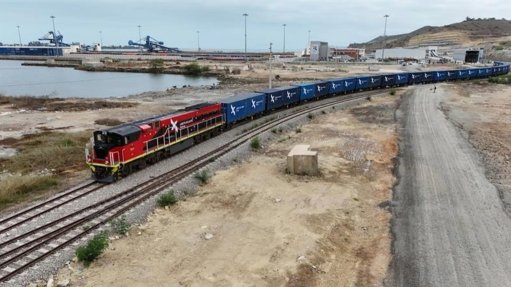Davies outlines agricultural benefits from new EU trade deal
South Africa is “satisfied” that the recently signed Economic Partnership Agreement with the European Union (EU) will lead to improved market access for some additional South African agricultural products, Trade and Industry Minister Dr Rob Davies said at the weekend, reporting that Cabinet had, therefore, “transmitted” the deal to Parliament for ratification.
The EU remains South Africa's main trading partner with total trade of R536-billion in 2015. In addition, a significant portion of South Africa's R216-billion in exports to the bloc last year were value-added products.
Speaking in Cape Town a week after six Southern African Development Community (SADC) members – Botswana, Namibia, Mozambique, Lesotho, South Africa and Swaziland – signed the so-called EU-SADC EPA trade deal in Botswana, Davies highlighted particular improvements in the areas of fisheries and agriculture.
Under the current Trade Development and Cooperation Agreement, which came into force in 2000, South Africa receives preferential access to the 500-million consumer, 28-country EU on 65% of its agricultural products. Under the EPA, however, there would be increased access for South African seafood, wine, canned fruit, sugar and ethanol.
The current yearly tariff-free quota of 50-million litres of South African wine would be increased to 110-million litres, while 150 000 t/y of South African sugar and 80 000 t/y of ethanol could also be exported to the EU tariff free. There had also been improvements in market access for canned fruit.
In return, the EPA recognises over 251 European geographic indications (GIs) including a range of wines, spirits, cheeses, meats and edible oils.
The EU, meanwhile, will recognise over 100 South African GIs, most notably Rooibos and Honeybush teas and Karoo Lamb. However, numerous wines and spirits are also listed, with the option to add an additional 50 names in future.
“The value of some of the GIs might be significant. We have had all kinds of people that are using the rooibos name. Now if we get recognition in the EU for it as a geographical indication, only those producing that product within the geographic areas of South Africa will be able to use it.”
The EPA also caters for South Africa to impose export duties on as many as eight products, but Davies stressed that there were no immediate plans for the imposition of such taxes beyond the levy currently imposed on unpolished diamond exports.
There was also greater flexibility in how the EPA would treat rules of origin, which could support greater integration of regional supply chains.
AFRICAN INTEGRATION
In fact, EU head of delegation to South Africa Ambassador Marcus Cornaro, who briefed the media on the deal jointly with Davies, argued that the new rules were supportive of the aspiration to improve regional integration.
The EPA allows for inputs sourced in any of the EPA countries, as well as from other African, Caribbean and Pacific States that have concluded EPAs with the EU, to be treated as arising from within the country's borders and, thus, not be subject to protection. The EU-SADC EPA is the first to be signed with an African region, but an East African agreements is expected later this year, while the Caribbean EPA is already in force.
Cornaro said the arrangement was, therefore, also supportive of current efforts towards a continental free trade agreement (C-FTA), which was being supported by the African Union, including South Africa, which was currently deeply involved with plans for the so-called Tripartite-FTA (T-FTA), which could span from Cape Town to Cairo, up Africa’s east coast.
South Africa had made offers to both the East African Community and Egypt, but Davies acknowledged that progress had been slower than initially hoped.
“The priority for us in the African regional-integration agenda, more particularly, is to broaden integration across the various regional communities.
“We think the value of large regional markets as a tool for promoting industrial development and diversification is critical and it’s for that we have been pursuing the T-FTA and the C-FTA – we are enthusiastic participants in those processes,” the Minister said.
However, liberalising tariffs alone would be insufficient to raising intra-regional trade, which stood at a paltry 12%. Attention would also need to be paid to infrastructure, economic diversification and building regional supply chains.
Closer to home, the trade Ministers for the Southern African Customs Union (Sacu) would meet in Gauteng over the weekend in an effort to “re-galvanise efforts to turn Sacu into a tool of developmental integration”, rather than an “arrangement of convenience held together by a redistributive revenue-sharing formula”.
Article Enquiry
Email Article
Save Article
Feedback
To advertise email advertising@creamermedia.co.za or click here
Comments
Press Office
Announcements
What's On
Subscribe to improve your user experience...
Option 1 (equivalent of R125 a month):
Receive a weekly copy of Creamer Media's Engineering News & Mining Weekly magazine
(print copy for those in South Africa and e-magazine for those outside of South Africa)
Receive daily email newsletters
Access to full search results
Access archive of magazine back copies
Access to Projects in Progress
Access to ONE Research Report of your choice in PDF format
Option 2 (equivalent of R375 a month):
All benefits from Option 1
PLUS
Access to Creamer Media's Research Channel Africa for ALL Research Reports, in PDF format, on various industrial and mining sectors
including Electricity; Water; Energy Transition; Hydrogen; Roads, Rail and Ports; Coal; Gold; Platinum; Battery Metals; etc.
Already a subscriber?
Forgotten your password?
Receive weekly copy of Creamer Media's Engineering News & Mining Weekly magazine (print copy for those in South Africa and e-magazine for those outside of South Africa)
➕
Recieve daily email newsletters
➕
Access to full search results
➕
Access archive of magazine back copies
➕
Access to Projects in Progress
➕
Access to ONE Research Report of your choice in PDF format
RESEARCH CHANNEL AFRICA
R4500 (equivalent of R375 a month)
SUBSCRIBEAll benefits from Option 1
➕
Access to Creamer Media's Research Channel Africa for ALL Research Reports on various industrial and mining sectors, in PDF format, including on:
Electricity
➕
Water
➕
Energy Transition
➕
Hydrogen
➕
Roads, Rail and Ports
➕
Coal
➕
Gold
➕
Platinum
➕
Battery Metals
➕
etc.
Receive all benefits from Option 1 or Option 2 delivered to numerous people at your company
➕
Multiple User names and Passwords for simultaneous log-ins
➕
Intranet integration access to all in your organisation



















